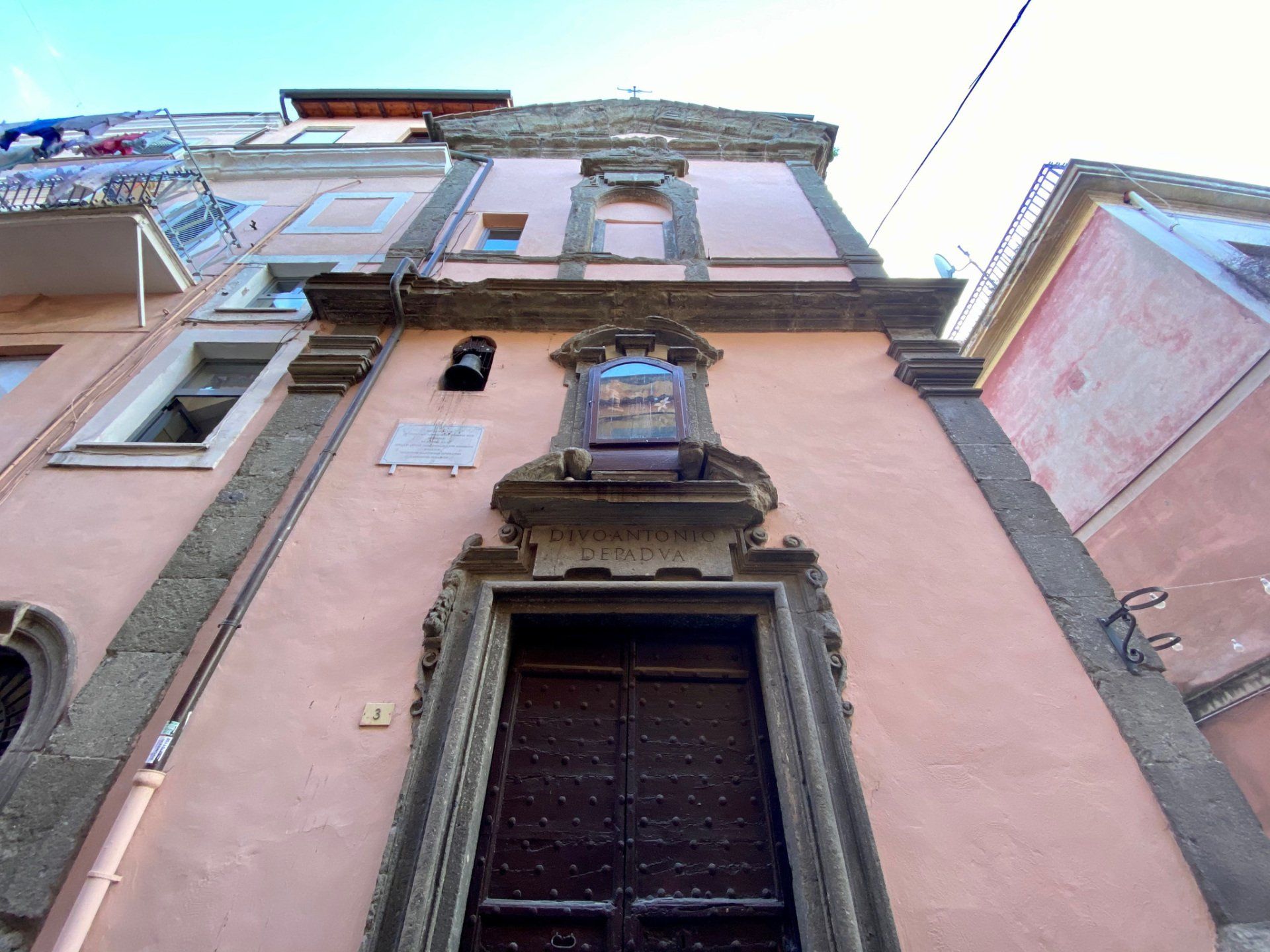
Slide title
Scrivi qui la tua didascaliaButton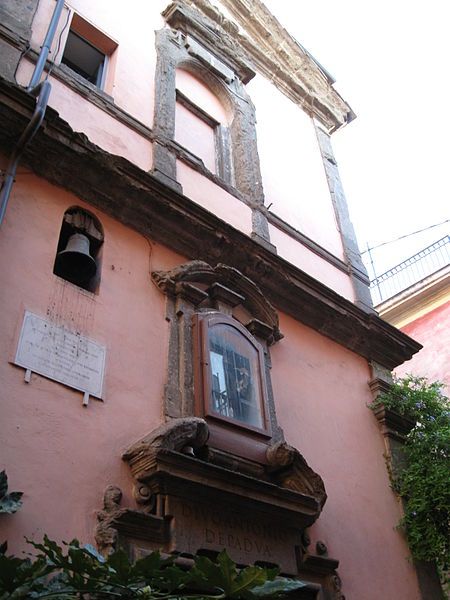
Slide title
Scrivi qui la tua didascaliaButton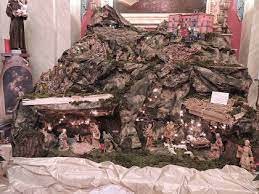
Slide title
Scrivi qui la tua didascaliaButton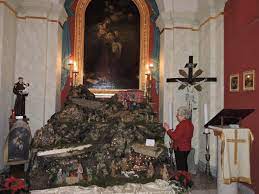
Slide title
Scrivi qui la tua didascaliaButton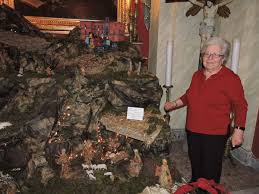
Slide title
Scrivi qui la tua didascaliaButton
Church of Sant 'Antonio of Padua
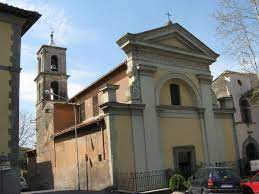
Slide title
Scrivi qui la tua didascaliaButton
Parish Church of Santa Maria delle Grazie
The church of Santa Maria delle Grazie (formerly called del Gonfalone [1]) is a Catholic place of worship in the city of Marino, in the metropolitan city of Rome and the suburbicarian seat of Albano. The church is annexed to the structure of the former convent of the Augustinian Fathers.
The church was probably built at the behest of the Confraternity of the Gonfalone di Marino between the fourteenth and fifteenth centuries as its headquarters [1]: on April 13, 1580 the Confraternity ceded the church and the adjacent land to the Augustinian fathers, who built their own convent next to the church. [ 2] The façade was remodeled in 1634, with the contribution of the architect Vincenzo della Greca, [3] while the adjoining convent instead underwent evident restorations in the eighteenth century.
In 1807, with the Napoleonic occupation of the Papal State and the annexation of Lazio to France, the ecclesiastical properties were expropriated and the Augustinian convent was closed and given as accommodation to private individuals. In 1815, with the fall of Napoleon Bonaparte and the return of Pope Pius VII to Rome, the religious regained possession of a large part of their property and of the convent with the adjoining church: the Augustinians remained in Marino until 1954. [2 ] Among the Augustinian religious housed in the convent mentioned by the writer Gaetano Moroni [1] are Father Gregorio Boetio, the Marinese father Agostino Bonacci and the Roman father Agostino Ussardi.
In 1954 the church was established as a parish. Restoration works on the facade and inside were carried out in 1964 and during the nineties, with the recovery of the Borgo Garibaldi district.
The church houses a painting depicting San Rocco, attributed to Domenichino or Mattia Farnese (1631 - post 1681) and previously preserved in the chapel of San Rocco located along the Via Maremmana towards Grottaferrata; a copy of this painting is kept in the Basilica of San Barnaba. Among the other works of art preserved in the church are a fresco with the Virgin of Grace attributed to Benozzo Gozzoli.
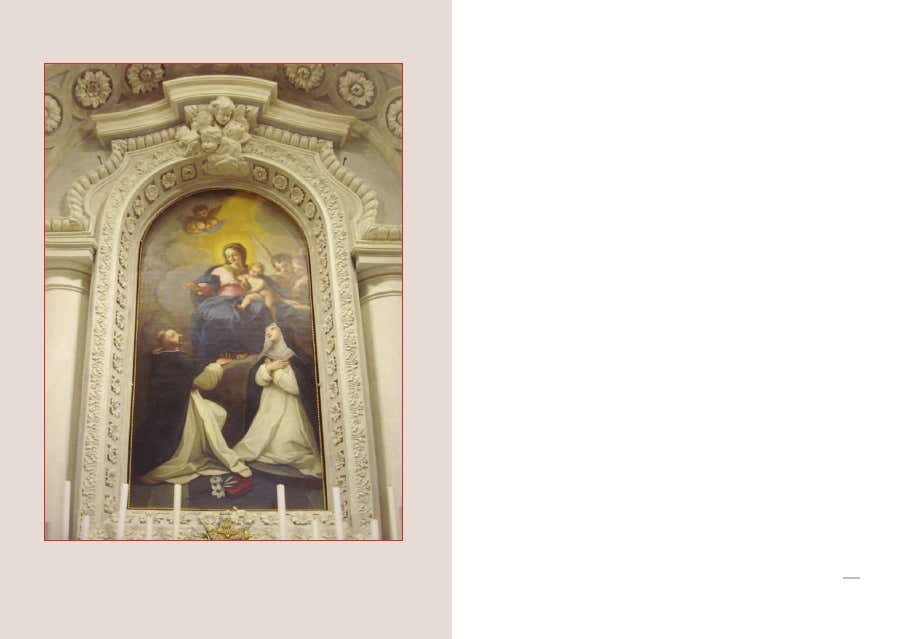
Slide title
Scrivi qui la tua didascaliaButton
Monastery Church of the Holy Rosary
The church of Maria Santissima del Rosario (formerly called "di San Domenico") is a Catholic place of worship in Marino, in the metropolitan city of Rome and the suburbicarian seat of Albano. It is annexed to the convent of the Dominican nuns of strict observance.
The convent of the Dominican nuns of strict observance was established by Pope Clement X with a brief of 8 May 1675. The foundation was promoted by mother Maria Isabella Colonna, born Maria Antonia, a nun at the convent of the Dominican nuns of the Santissimi Domenico and Sisto in Rome.
Sister Maria Isabella's brother, Duke Lorenzo Onofrio Colonna, went along with his sister's wishes and financed the construction of the convent. On 27 May 1675 the duke bought some houses, stables and cellars in the square of "For de Porta" from a certain Ferdinando Leoncelli for 2165 scudi; on 17 June 1676 Lorenzo Onofrio endowed the monastery with an annual income of 300 scudi. The works of arrangement were carried out quickly and already on 22 September 1676 Sister Maria Isabella was able to settle in the new convent. The founder died at the age of forty-eight, in 1682.
I lavori per la costruzione della chiesa ebbero inizio il 2 marzo 1712 dietro disegno dell'architetto Giuseppe Sardi. I lavori terminarono il 30 aprile 1713.
The community of the "confined monics", as they are familiarly called by the Mariners, has become over the centuries a point of reference for the city. During the tragic events of 1944, a small makeshift hospital was set up at the convent.
On December 9, 2008 Vladimir Luxuria went to the Umberto Mastroianni Civic Museum to visit the exhibition set up in memory of Luciano Massimo Consoli, the late president of the homosexual culture club in Rome. During the visit, the ex-honorable also wanted to visit the convent.
The church, of not exceptional dimensions, is however a fine example of Roman Rococo of the early eighteenth century, so much so that it has attracted the curiosity of distinguished scholars: it develops with a Greek cross plan surmounted by a dome: the interior is completely covered with white stucco. Behind the altar, set in the wall, there is a fifteenth-century tabernacle attributed to the school of Mino da Fiesole.
The monastery, on the other hand, is the result of the union of various buildings. The architecture is deliberately bare, in line with the charisma of the nuns: it was therefore observed that the monastery is large, but not grandiose
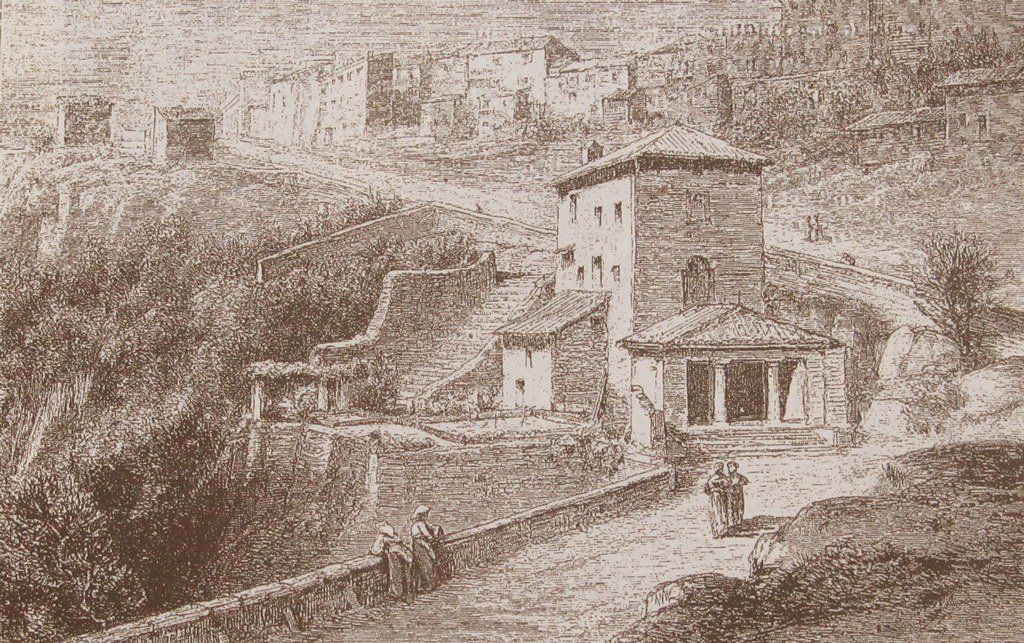
Slide title
Scrivi qui la tua didascaliaButton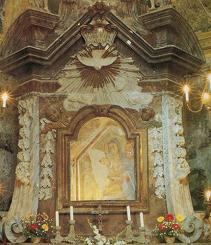
Slide title
Scrivi qui la tua didascaliaButton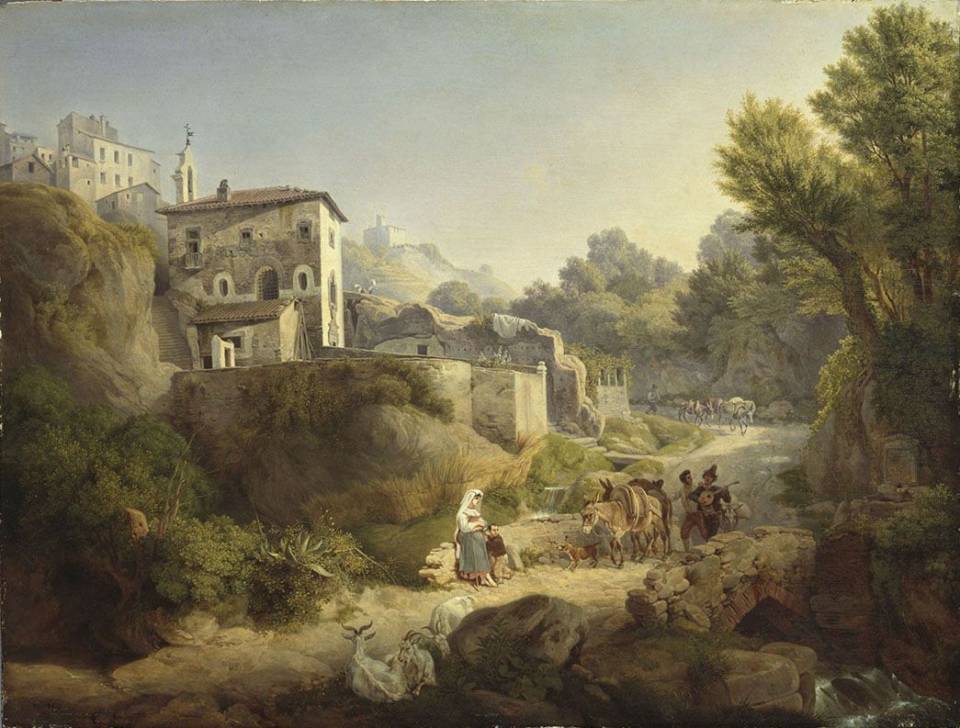
Slide title
Scrivi qui la tua didascaliaButton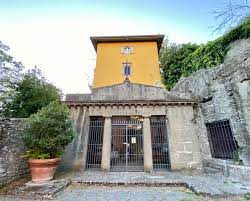
Slide title
Scrivi qui la tua didascaliaButton
Slide title
Scrivi qui la tua didascaliaButton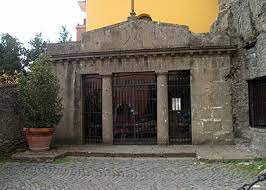
Slide title
Scrivi qui la tua didascaliaButton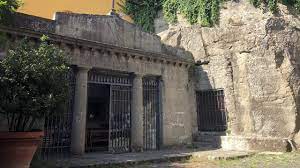
Slide title
Scrivi qui la tua didascaliaButton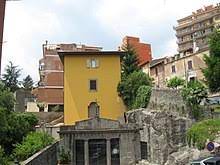
Slide title
Scrivi qui la tua didascaliaButton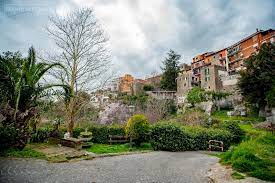
Slide title
Scrivi qui la tua didascaliaButton
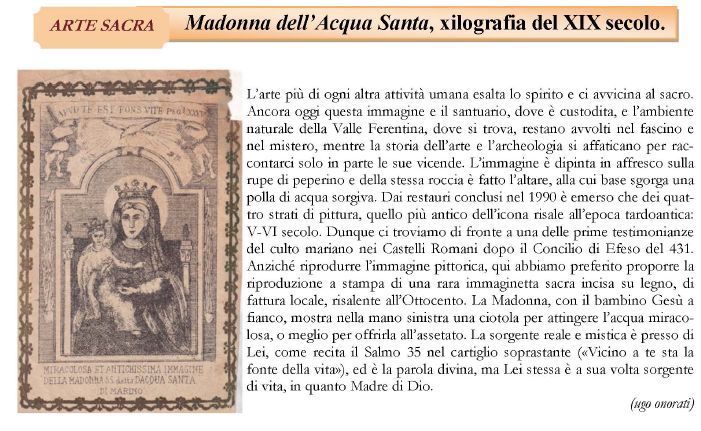
Church of the Holy Water of Marino
The sanctuary of Santa Maria dell'Acquasanta or dell'Acqua Santa [(also known over the centuries as Santa Maria dell'Orto, [2] [3] [4] Santa Maria d'Ammonte or Madonna del Sasso) is a place of Marian Catholic worship in the city of Marino, in the Castelli Romani area, in the metropolitan city of Rome and the suburban seat of Albano. "The Mariners, men and women of faith," read "the source in the middle of the bench peperino as a sign of God's benevolence to their city, granted through the intercession of Mary and they considered it a source of miraculous and holy water. [...] "
(Dante Bernini, bishop of the suburbicarian diocese of Albano, in Vincenzo Antonelli, The Church of the Madonna dell'Acquasanta in Marino, Veroli 1993, p. 3.)
The image of the Madonna was probably made between the fourth and ninth centuries, according to popular tradition around the sixth century, as suggested by the methods of realization found during the last restoration of the painting and the fact that the measures of the same are easily calculable in Roman feet. Later, the image was repainted between the twelfth and fourteenth centuries and partially remodeled around the sixteenth century and finally in the eighteenth century, when the orientation of the image was adapted to the orientation of the altar.
Quando incominciò la venerazione dell'immagine la stessa doveva trovarsi in un'edicola stradale all'aperto, lungo l'allora strada pubblica che conduceva a Castel Gandolfo ed Albano Laziale, corrispondente all'attuale via Antonio Fratti. L'immagine era collegata all'abitato con una scala di trentaquattro gradini scavata nel peperino, che permetteva di evitare il ripido tornante della strada e che ancora oggi è visibile sul retro del santuario. La venerazione dell'immagine è legata anche ad un evento miracoloso riferito dalla tradizione popolare: si narra che un uomo, mentre si recava a cavallo sulla via Maremmana Inferiore in direzione di Castel Gandolfo ed Albano Laziale, perse il controllo dell'animale nei tornanti della strada e rischiava di cadere nel precipizio, se la Madonna non fosse intervenuta a salvarlo. Nei secoli successivi, altri miracoli vennero attribuiti alla Vergine dell'Acquasanta: nell'agosto 1883 l'alto prelato Pietro Rota,[11] arcivescovo di Cartagine e canonico regolare della basilica di San Pietro in Vaticano a Roma, fece realizzare un ex voto a Maria per ringraziarla di averlo salvato da una rovinosa caduta da cavallo nei sentieri a precipizio sul Lago Albano; e così molti altri episodi, anche piuttosto seri.
L'edicola venne visitata nell'estate 1260 o comunque agli inizi degli anni settanta del Duecento da san Bonaventura da Bagnoregio, cardinale vescovo della diocesi suburbicaria di Albano dal 1270 al 1274, che assorto in preghiera presso l'immagine mariana ebbe l'ispirazione per fondare l'arciconfraternita del Gonfalone di Marino.
Probably in the sixteenth century the roadside shrine was incorporated into the first nucleus of the sanctuary, since in the land registry of the Marinese properties of the Colonna family of 1566 an "ecclesia" [9] dedicated to the Madonna "loco divotissimo" is mentioned. the rectory located above the church, since in 1682 there were three hermits residing there. The final appearance inside the sanctuary was determined by the works carried out between 1693 and 1720: the entire building, with one nave, is excavated in the peperino and has remains of plaster and ribs.
The Rococo altar had already been built in 1759, while two Calabrian priests Giovanni Andrea and Nicola Fico financed the construction of the side altar of the Holy Crucifix in 1788, which was subsequently used by the Secular Franciscan Order, as evidenced by the coat of arms affixed to the altar itself. In 1792 the two Calabrian priests financed the sanctuary again, completing the rectory tower with two other floors and building a small bell gable above it.
The current appearance of the facade of the sanctuary is due to the interventions financed in 1819 by Francesco Fumasoni Biondi and commissioned to the architect Matteo Lovatti, who created one of his most celebrated and successful works here. [18] [19] Between 1823 and 1824 Massimo d'Azeglio, who was staying in Marino at that time, painted a pictorial decoration in the church commissioned by Fumasoni Biondi, now lost.
Nel 1926 il nobile Riccardo Tuccimei, enfiteuta del santuario all'epoca di proprietà del capitolo della basilica collegiata di San Barnaba, decise di demolire il campanile della chiesa, decisione che pur contestata dal Comune e dalla "Società dell'Acqua Santa" venne comunque messa in atto.
In the eighties of the twentieth century a restoration was carried out on the sacred image by the architect Vincenzo Antonelli, which led to important historical and artistic results.
The facade and the narthex
The facade and the narthex of the sanctuary were built in 1819 by the architect Matteo Lovatti, active in the same period also in Velletri and Albano Laziale and awarded for his artistic merits the Order of San Silvestro Papa, with the funding of the regular canon of basilica of San Barnaba Francesco Fumasoni Biondi.
Il prospetto della facciata, neoclassico, è realizzato interamente in peperino, con un ingresso "in antis" (cioè scandito da due colonne tuscaniche) che sorreggono un architrave modanato sostenuto da mensola che corre lungo tutto il prospetto della facciata. La cancellata in ferro battuto che chiude il nartece all'esterno è stata collocata nel 1865, ed ora è sostituita con una vetrata
at times. The perimeter of the hall is crossed by a sturdy cornice.
On the right wall there is a cut in the peperino, probably an ancient aqueduct that served the cave near the sanctuary, which some have hypothesized to be a Roman or pre-Roman sanctuary, located near the Bosco Ferentano consecrated to the Latin indigenous divinity Ferentina.
Sulla parete sinistra, c'è una lapide di marmo apposta dai sacerdoti calabresi Giovanni Andrea e Nicola Fico nel 1788 a celebrazione del loro finanziamento per la costruzione dell'altare laterale del Santissimo Crocifisso
remodeled in various periods: the Secular Franciscan Order, for example, had its coat of arms in white marble placed on a blue field in the oval of the tympanum. Between 1823 and 1824 the same canon Fumasoni Biondi who had financed the construction of the facade donated a life-size wooden crucifix to the altar and asked Massimo d'Azeglio, at the time a vacationer in Marino, to create a pictorial frame at the sacred image. [20] Moreover, the painter, future president of the Council of Ministers of the Kingdom of Italy, was helped in the work by two brigands who took refuge in the sanctuary to escape arrest, a sign that in the sanctuary it was possible to have the right of asylum for common criminals. Currently, both the crucifix, probably transferred before the Second World War in the Basilica of San Barnaba and replaced with a medium-sized nineteenth-century polychrome wooden crucifix, and the fresco have been lost. The marine historian Girolamo Torquati believes that the Santissimo Crocifisso di Marino was originally exhibited in the sanctuary, an image that began to perform miracles in June 1635 [26] and was transferred to the church of the Holy Trinity, where it is still kept, by the religious congregation of the Clerics Regular Minor in June 1637.
The main altar, obtained from a large block of peperino isolated probably in the eighteenth century, [24] houses the Marian image framed by festoons and stucco scrolls, [16] and surmounted by two broken tympanums in the center of which we can read the inscription in Latin: "apud Te est fons vitae - Psal XXXV" ("near you is the source of life", psalm 35 "). On the two tympanums, there are two small statues depicting curly children: in the center, a small tondo depicting God and the Holy Spirit represents, in connection with the Child Jesus below, the Trinity
L'accesso alla sacrestia è dato da una porta in bronzo opera recente del pittore e scultore marinese Stefano Piali (2005), che raffigura il miracolo della Madonna dell'Acquasanta. Gli stipiti in peperino della porta sono antichi.
Il locale della sacrestia è una stanza rettangolare dal soffitto con volta a padiglione coperto da stucchi del Settecento ora in gran parte rovinati. Fuori della sacrestia c'è un giardinetto, che lo studioso Vincenzo Antonelli ipotizza essere stato l'"orto" che diede la prima denominazione al luogo di culto: qui è collocata la scala scavata nel peperino che costituiva l'accesso originario all'immagine mariana prima della costruzione della chiesa
Sopra la chiesa si eleva una torre a due piani, già esistente nella seconda metà del Cinquecento e sopraelevata alla fine del Settecento. Al culmine della torre sorgeva un campanile a vela di piccole dimensioni, demolito negli anni venti: delle due campane ivi collocate, una è andata dispersa, mentre l'altra viene ancora utilizzata all'interno del santuario. Entrambe furono fuse nella stessa data di realizzazione del campanile, 1792, grazie ai finanziamenti dei summenzionati sacerdoti calabresi Giovanni Andrea e Nicola Fico.
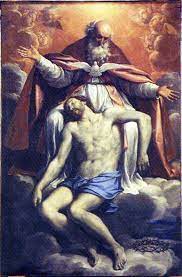
Slide title
Scrivi qui la tua didascaliaButton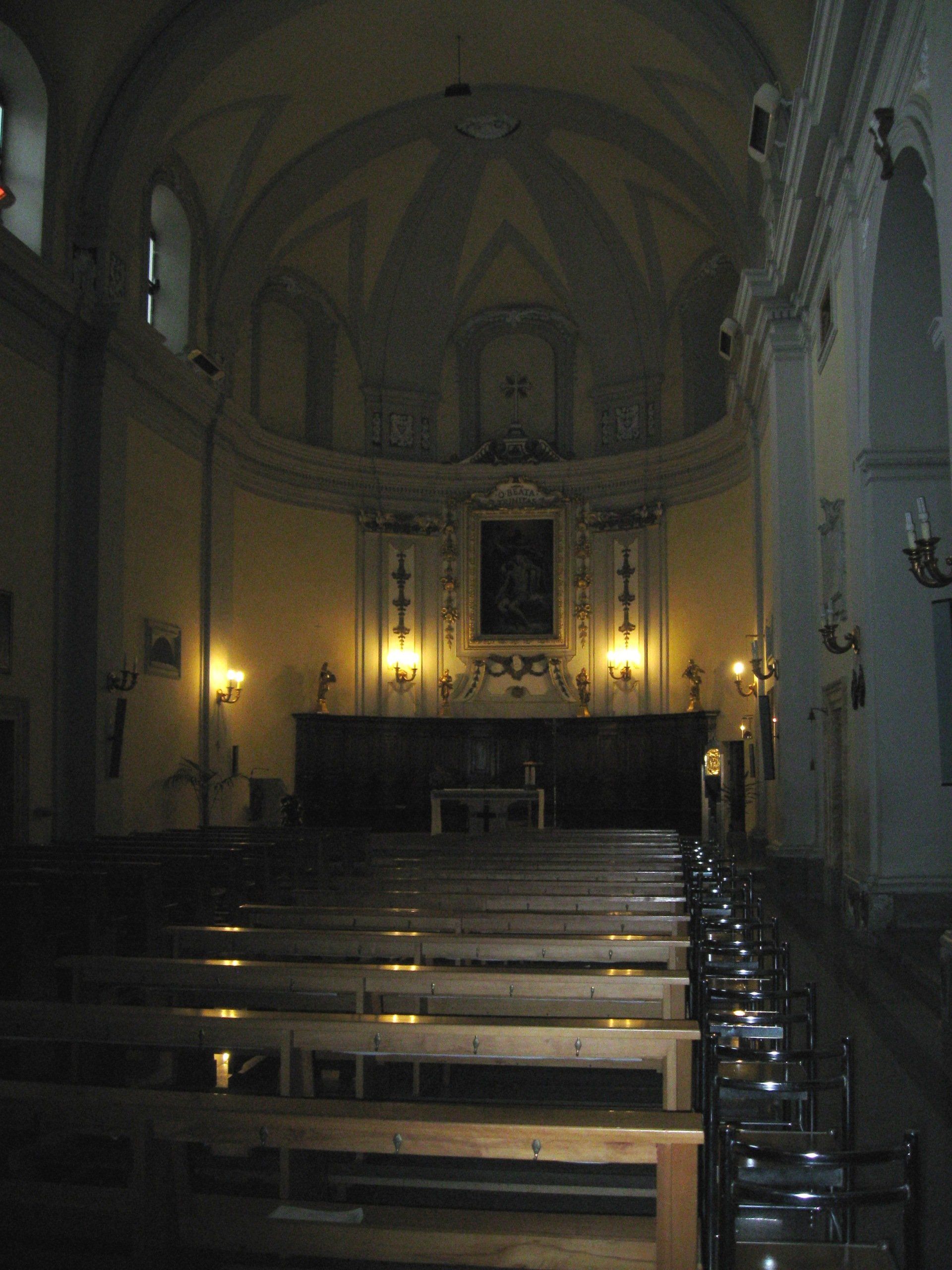
Slide title
Scrivi qui la tua didascaliaButton
Slide title
Scrivi qui la tua didascaliaButton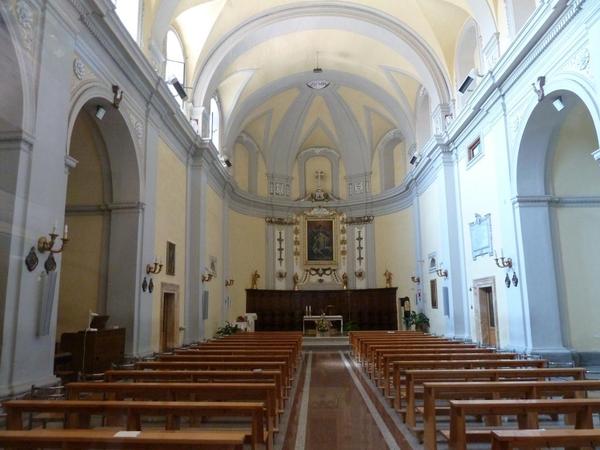
Slide title
Scrivi qui la tua didascaliaButton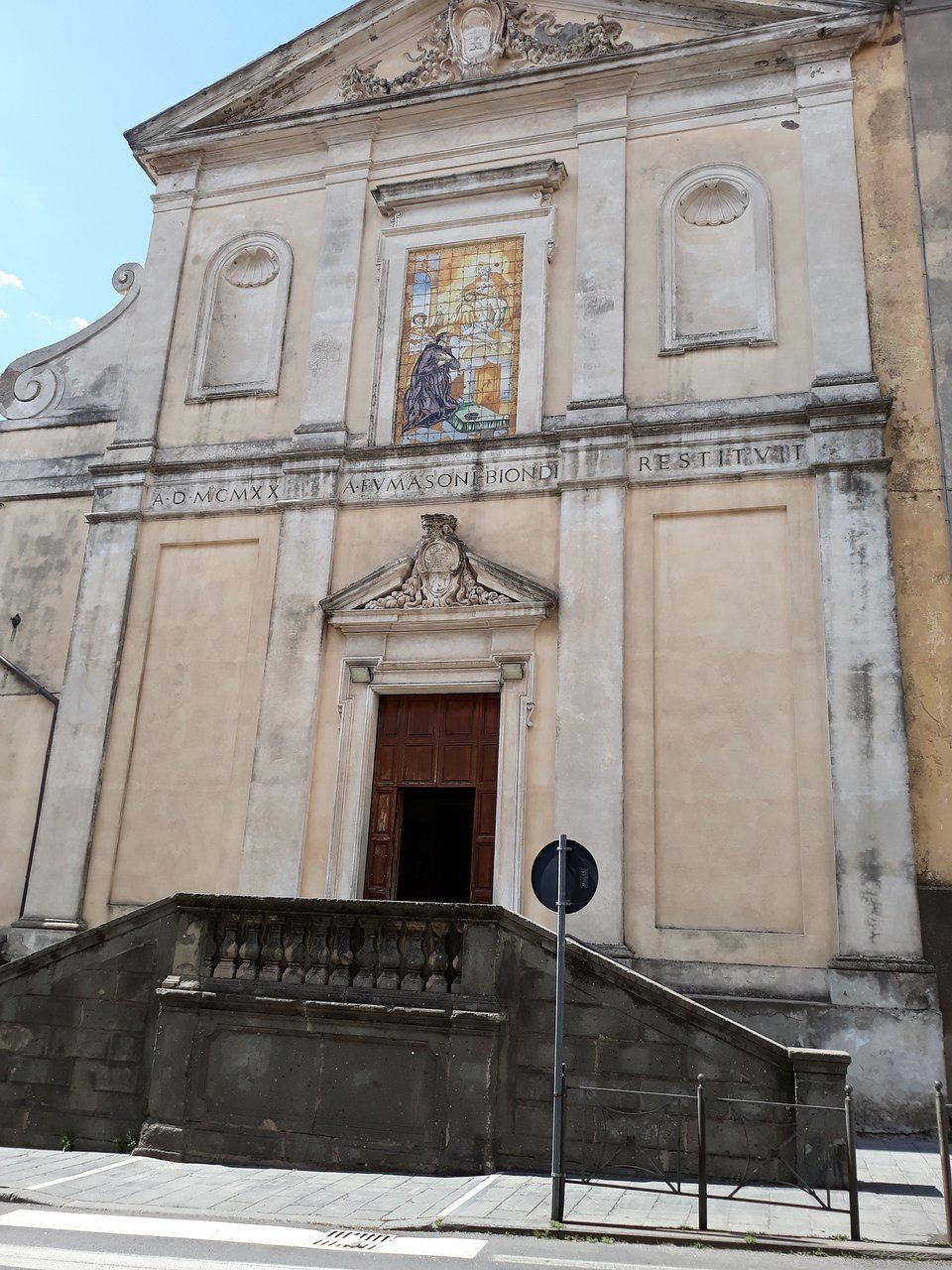
Slide title
Scrivi qui la tua didascaliaButton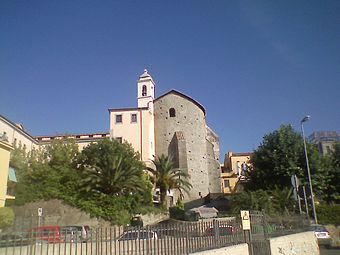
Slide title
Scrivi qui la tua didascaliaButton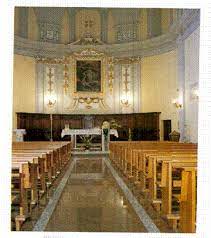
Slide title
Scrivi qui la tua didascaliaButton
Chiesa della Santissima Trinità di Marino
The church of SS. Trinità, once also called the church of the Crucifix, is one of the main sacred buildings of Marino not only for its size, but also for the historical and artistic testimonies that characterize it.
It stands along Corso Vittoria Colonna, one of the most important roads in the city, on the left side of the provincial road in the direction of Grottaferrata and Frascati, at the extreme limit of the inhabited center, as it was at the beginning of the modern age, before the municipal villa Colonna in Belpoggio.
A differenza della coeva basilica collegiata di San Barnaba, la cui fabbrica si erge isolata e assai più imponente, come si conviene ad un duomo, la chiesa della SS. Trinità è inserita e quasi si confonde fra gli edifici civili, nonostante abbia un prospetto slanciato. Inoltre, rispetto alla basilica, che è pure la principale parrocchia di Marino, la chiesa può vantare fin dalla sua fondazione un proprio stato giuridico e una funzione autonoma che per secoli l'hanno contraddistinta.
Origini e fondazione
The sacred building was built in the first half of the seventeenth century, the golden period of the urban and civil growth of Marino, started and largely built at the time of Filippo Colonna, who ruled the city from 1611 to 1639. Son of Fabrizio and of Anna Borromeo, a niece of the famous Milanese cardinal Federico, Filippo (1578-1639), first of the family with this name and third to bear the title of Duke of Marino, married the Neapolitan noblewoman Lucrezia Tomacelli.
In almost thirty years he contributed to transforming Marino even more than Marcantonio and Ascanio Colonna had done, until it became the way we still see it today: the definitive arrangement of Palazzo Colonna, of the small Lepanto square with the Fountain of the Moors. , of the Borgo delle Grazie, the creation
of the Bevilacqua villa on the Roman road and of the one in Belpoggio, adjacent to the church of SS. Trinità, of which a small portion remains today used as a municipal villa.
Marino's new urban face was fully realized by his successor Girolamo Colonna, but the premises and projects are largely due to Duke Filippo, as for the basilica of San Barnaba, which was completed over twenty years or after his death.
The urban expansion, which began in Marino in the last thirty years of the sixteenth century, was accompanied by a demographic increase in the city, as can also be seen from the registers of the parishes of Santa Lucia and San Giovanni. Many artisans and workers came from all over Italy attracted by the job opportunities offered in those years by Rome, but also by its nearest Lazio centers.
Among the many who arrived in Marino in that period, at the turn of the two centuries, there was a certain priest Don Pietro Gini, a native of Varese, who with his money had a first and more modest church built than the current one and already then wanted dedicate it to the SS. Trinity, since according to what is narrated the priest received a painting representing the Mystery of the divine Trinity from the hands of Guido Reni, eminent master of Italian painting of the time, in exchange for the hospitality granted to the artist during his stay in Marino. Much more likely the choice was dictated by the disclosure of theological and doctrinal reasons following the post-Tridentine conciliar debate.
Poiché questa prima chiesa era stata costruita a spese di don Pietro Gini, costui ottenne per sé il diritto di patronato sul sacro edificio con un breve concesso da papa Clemente VIII in data l marzo.
1603. Right that he wanted to be subsequently revoked in 1614 in favor of the Order of the Minor Regular Clerics of San Lorenzo in Lucina in Rome, also briefly called Caracciolini from the name of their founder San Francesco Caracciolo.
To these religious he also donated the church, the property of an adjoining house and a legacy of 1,500 scudi, with a regular will dated 25 June 1614, registered by the notary Fabrizio Zuccoli di Marino. Then with another will of 21 September, the same year and the same notary, his father Gini inexplicably instituted his universal heir Filippo Colonna, Duke of Marino and then died on the following 26 October. However, the donation went into effect in favor of the Caracciolini, thanks also to the interest of Pope Paul V, who, with a short pontifical on January 30, 1615, confirmed the established dowry of the house and the church, which was definitively assigned to the religious with the instrument of 11 June 1615, on the condition that all the assets would be returned to the Colonna family, should the religious decide to leave Marino. The monks were also granted an ounce of water from the public fountain.
However, it seems that the Caracciolini were called to Marino since the early seventeenth century by Fabrizio Colonna and his wife Anna Borromeo and not fifteen years later by their son the Duke Filippo, as the memories of the religious order pass on. This in order not only to assist the secular clergy of the two medieval parishes of Santa Lucia on the fortress of the castle and of San Giovanni al Castelletto, but also to spread the Catholic doctrine among the marine population of about three thousand souls, believed to be numerous at that time. according to the catechetical directives established by the Council of Trent.
Di frequente i religiosi effettuavano missioni nella diocesi di Albano, inviati dal cardinale Sfondrato, che li chiamava "suoi Apostoli". Inoltre questi presero a farsi benvolere dalla popolazione di Marino, tanto che questa iniziò a supplicare le autorità civili ed ecclesiastiche, affinché intercedessero presso il papa per riceverne il breve di conferma. Dopo averlo ottenuto, come si è detto, e due giorni dopo il regolare istrumento, il 13 giugno 1615, festa della SS. Trinità, undici confratelli provenienti da Roma solennizzarono doppiamente quella giornata nel porsi al servizio della comunità marinese, presso la quale restarono per circa due secoli.
However, already in the year 1635 the Clerics Regular Minor felt the narrowness of the space made available to them twenty years earlier and therefore they meditated to build a new church and a new house, which they built, as Torquati says, "at their own expense and with the liberality of the people of Marino "; while from the Notizia Historica which contains the memoirs of the Order, we learn that "However, since the smallness of the church was not sufficient for the confluence of the People, another more capable and more beautiful was built on a more noble site, and comfortable, where at present he finds himself with the adjoining house, whose structure as a work of common charity, which contributed to it with devout liberality, is no less radiant than the place as a perennial monument to the piety of that people ".
The land, where the new house and the church were later built, the clerics bought from a certain Giacomo Grassi, through an exchange of their house, with a deed signed for the deeds of the notary Marco Antonio Terziani of January 22, 1635, subject to apostolic approval. sent on 2 September 1634. Later the religious bought other small plots of neighboring land, but on 27 March 1635, the first stone of the current church of SS. Trinity, as also results from the deed drawn up by notary Cherubini on the same date. The sacred building was not yet finished when on June 14, 1637 a miraculous Crucifix painted on peperino was transferred to the second chapel on the left, for those who enter. Torquati narrates that the relative stone boulder was placed at the least worst possible in the intended space.
L'edificio fu concluso presumibilmente intorno al 1640, anche grazie al contributo del padre generale dell'Ordine Filippo Sante Bargagli, tuttavia ancora nel 1717 papa Clemente XI donò 600 scudi per la costruzione dell'abside; mentre la sacrestia fu realizzata a spese del padre generale dei Caracciolini Battista Bassaletti; il refettorio, il coro, due cantine e il cortile furono realizzati dal padre generale Giovanni Matteo vescovo di Murcia e Cartagena; poi ancora il padre Antonio Lopez fece fare gli stucchi della Chiesa e la gradinata esterna; il padre Emanuele Lopez fece fabbricare l'appartamento sopra la sacrestia, i gradini dell'altare maggiore ed altre opere. Nel 1747 l'ambasciatore del Portogallo, il commendatore Emanuele Pereyra de Sampajo contribuì all'edificazione dell' appartamento a levante, ove fu ricevuto il 17 giugno 1749 il papa Benedetto XIV, che vi pranzò con il suo seguito. A memoria di tale avvenimento fu apposta poi una lapide.
For his part, the Duke of Marino Filippo II, son of Lorenzo Onofrio Colonna, granted the religious on 2 July 1713 a substantial strip of land which he separated from the villa of Belpoggio built by his homonymous ancestor, in exchange for a symbolic recognition of the debt, equal to two pounds of wax a year. The deed of concession, registered by the notary Zuccoli di Marino and then Damiani di Albano, allowed the clerics to be able to dispose of sufficient land for their direct or indirect livelihood.
The very elongated and steeply sloping plot roughly coincides with the current band of public houses, which rise along via Monsignor Grassi, on the ground behind the Church of the SS. Trinità and sloping down to the lower level of Piazza Europa, which became the property of the Municipality of Marino following the confiscation of non-parochial ecclesiastical assets after the twentieth of September 1870.
In 1703 the right of patronage was ceded to Don Patrizio Silvestri in the chapel of the Madonna di Tutti Bene and the same of another chapel in 1740 in favor of the wealthy Marinese Emilio Marchetti. The Church also had a crypt, in which the tombs of some illustrious local families, such as the Fumasoni, the Marchetti, and the Silvestri, were found.
The organization of education and the Gregorian College
Between the end of the seventeenth century and the first years of the following century, both the institutions and the less well-off families felt the need for a more widespread education. New religious educational institutions appeared, such as the Brothers of the Christian Schools (1702), also known as the Carissimi. Likewise, it was no longer only the sons who benefited from the general process of literacy, which progressively extended to the daughters as well. Therefore in 1688 the Ursuline nuns made their appearance in Rome and in 1707 the new and dynamic institute of the Maestre Pie Venerini began their precious religious teaching work, which, in Marino, opened a house with a popular school on 15 August 1732.
Considerando complessivamente carente l'istruzione superiore il consiglio comunale di Marino stipulò una convenzione il 30 dicembre 1766, atto notaio Fiorelli, con i Caracciolini per l'istruzione della pubblica gioventù. Per tale servizio i religiosi ricevettero dal Comune 80 scudi annui per la retribuzione ai maestri e per sostenere le spese del mantenimento dei locali. In cambio i Chierici Regolari Minori si obbligavano a fornire tre maestri, uno per la scuola dei rudimenti, cioè elementare, il secondo per la grammatica e la retorica, il terzo per la filosofia.
With the passing of the years the religious kept less and less faith in the convention, to the point that in the council meeting of 9 September 1818 the public representatives reported the total disorganization of the albeit slender school structure managed by the Caracciolini. They also denounced the non-observance of the obligations assumed by the counterpart who had practically stopped teaching due to lack of teachers.
In the following session of 16 November it was decided to hold a competition for only two teachers, the first teacher of lower studies with a salary of 90 scudi per year, the second of higher studies, paid with 110 scudi per year. The newly appointed teachers were unable, with the general protest of the families, to meet all the questions of the young Marinese who asked to be educated at that school established by the Municipality in the premises of the religious.
Il priore del Municipio, Lorenzo Ingami, nella seduta del 17 dicembre 1828 proponeva di avanzare una istanza al Santo Padre per la soluzione dell'annoso problema dell'istruzione pubblica a Marino, richiamando i Chierici all'osservanza del contratto. Istanza che fu effettivamente inoltrata al papa tramite il cardinale Bertazzoli, prefetto degli studi, e per conoscenza anche a Piccadori, proposito generale dei Caracciolini. Ci furono anche numerosi incontri fra autorità ecclesiastiche e fra queste e la comunità locale. La situazione non si sbloccava, mentre gli anni passavano. Il consigliere Cesare Paiella propose allora in seduta di vendere la casa per pubblico beneficio, qualora i religiosi continuassero nella loro inerzia. Le promesse di Piccadori si protrassero di anno in anno, fino al 1835, quasi sempre disattese, finché intervenne di persona papa Gregorio XVI, il quale invitò i Chierici Regolari Minori, privi di validi elementi per gestire l'insegnamento e per assumersi impegni che non potevano materialmente mantenere, a consegnare la Chiesa, l'annesso convento con la biblioteca, i mobili e tutte le altre suppellettili ai Padri della Dottrina Cristiana, detti pure Dottrinari. Di tale decisione veniva informato immediatamente il cardinale vescovo di Albano.
Finally, in October of the year 1835, the school was reopened for young people from Marinesi, an action directly following the apostolic letter of July 3 of that same year, with which the pope raised Marino to the rank of city.
Subsequently Gregory XVI returned to the subject of public education on 12 December 1837 with a letter addressed to Cardinal Mattei, protector of Marino, in which the pope destined in perpetuity to the Municipality of Marino all the property acquired by the Caracciolini and handed over to the Doctrinaries for management. with the commitment to maintain the building and not to use it for other activities other than the scholastic ones, for which the college was born.
A boarding school was opened for young people aged from eight to fifteen and a strict discipline was introduced into the college regulated by a rector, who in his opinion established the timetable, the subjects taught, the way of dressing during the seasons, the disciplinary measures and all the norms relating to religious practices carried out in the community or individually, such as learning the catechism and participating in the Holy Mass.
The subjects taught were: grammar, humanity, rhetoric, philosophy and theology, while the complete school course was divided into five didactic cycles, or schools. At the lowest level it was the school of the first elements lasting four years and reading and writing were taught in both Italian and Latin. Then there was the lower grammar school lasting two years, divided into the lowest and highest class, in which Latin, geography and arithmetic were learned. Higher grammar school followed, also divided into two classes, where the previous two-year program was further developed with the addition of spelling, Greek and Roman history and the study of classical Latin authors. The fourth level was the school of humanity and rhetoric, where classical culture was deepened and refined. Lastly, the school of philosophy which in a two-year period made it possible to know first logic, metaphysics and mathematics, then physics and ethics. In the exhibitions, both by teachers and students, Latin was used fluently, while Italian was used only for mathematics and physics.
For decades the Doctrinaries worked for the instruction and education of the youth of the Sea and not only this one, since students from other parts of the Comarca arrived at the Gregorian college. From here came many professionals and much of the middle class of the time. The school enjoyed a notable reputation, traces of which can be found, even many years after the forced suppression, in the debates of the municipal councils.
So much was the benefit received by the city with the establishment of this school complex that the Mariners did not fail to express their gratitude by placing an epigraph on the front of the college which reads as follows: GREGORIUS XVI POM! COLLEGIUM MARINENSEI INSTITUITI YEAR MDCCCXXXV. Then the Municipality enlarged and embellished the premises of the college bringing the school to excellent levels of reception and medium-high education, making that of Marino in importance one of the first institutes in the province.
The first rector of the school was Don Raimondo Cesaretti. The Doctrinaries remained in Marino until 1871. In fact, with the promulgation of the lieutenant's circular dated 2 December 1870, the municipal administrations were invited to take possession of all the bequests for the benefit of public education. Having been invited to leave in good faith and since the Doctrinaries did not intend to do so, in the session of 7 August 1871 the councilors claimed, through the court of Rome, the requisition of the building used as a college, the church, the furnishings and all kinds of connected annuity.
The secular fury of the first liberal and Masonic administrations blindly and unconsciously suppressed the school, without replacing it with any other form of education and, in this way, dispersed an important cultural heritage, which subsequent public administrators never wanted or knew how to shelter ( 5).
In tal modo i Padri Dottrinari dovettero lasciare Marino, mentre tutto il complesso venne occupato da uffici comunali, abitazioni di impiegati pubblici e aule di scuole elementari. La chiesa fu abbandonata a se stessa, e nei verbali pubblici non compare più come l’edificio sacro dedicato alla Santissima Trinità, o al Crocifisso, ma come la "chiesa comunale del collegio". Di quando in quando il Comune provvedeva ad affidare a qualche sacerdote l'incarico di svolgervi i riti sacri.
In 1884 the municipal offices moved to the new headquarters overlooking the Town Hall square, now Piazza Matteotti, and the Collegio was largely uninhabited and abandoned. Then on January 15, 1919 the Marquis Achille Fumasoni Biondi bought for £. 60,000 the property donated by Pope Gregory to the Marines a little less than a century earlier! The purpose of the local administration was to favor the establishment of a private technical, commercial and agricultural school. However, just a few months after the sale, the new owner received £. 85,000 for the damage caused by the passage of troops during the war period 1915-1918. The Marquis was also allowed to officiate in the church of the SS. Trinità and to restore it, as it actually happened in 1920, while remaining the municipality owner of the only sacred building.
The college, also restored, was given by the Marquis in management for a decade to the Giuseppini Fathers for the higher education of the Marinese youth. In turn, on January 29, 1930, Filodoro notary deed, the Municipality bought back from the Marquis for the "modest" sum of £. 650,000 the annexed land and the building, which in the meantime was now called in common use and in public deeds "Palazzo Fumasoni Biondi", or "Convitto Maria Fumasoni Biondi" from the name of the nobleman's wife. In 1930 the Giuseppini left Marino, like the Doctrinari expelled from the municipal administration, and transferred the "Leonardo Murialdo" institute to the nearby Municipality of Albano. The Municipality of Marino, leaving the church to its religious function, variously used the ancient Gregorian college, setting up offices and, again, the elementary schools, with the project of transferring the Royal School of Art, named after the marine engraver Paolo Mercuri. However, although several adaptation works had been made in the following years, the School of Art remained for many decades still in the classrooms of Palazzo Colonna. The complex was also used as a center for the summer colony named after Sandro Mussolini, during the fascist regime. In the years of the last post-war period, the "Michele Amari" Technical Commercial Institute was housed here, which then moved, about twenty years ago, to Pantanella, today in the Municipality of Ciampino. Around 1979 the Gregorian college was definitively closed, because it was dilapidated. Towards the end of the Eighties the Municipality, having obtained the funding for the restoration of the building, began the works that ended no more than three years ago. Only then was the "Paolo Mercuri" State School of Art able to move there, returning the building to its former function.
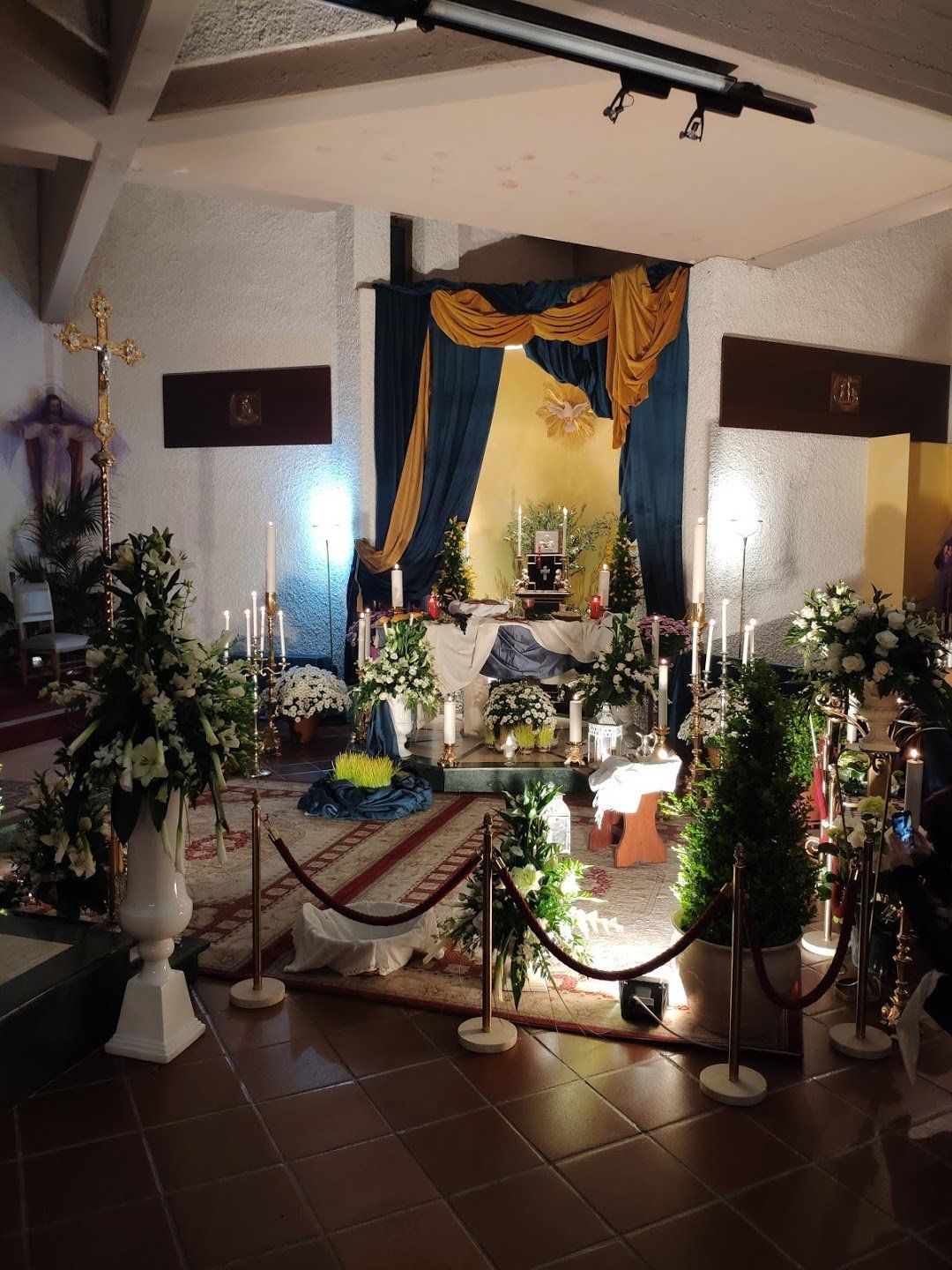
Slide title
Scrivi qui la tua didascaliaButton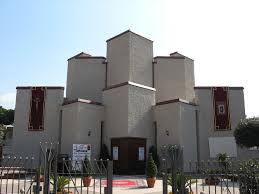
Slide title
Scrivi qui la tua didascaliaButton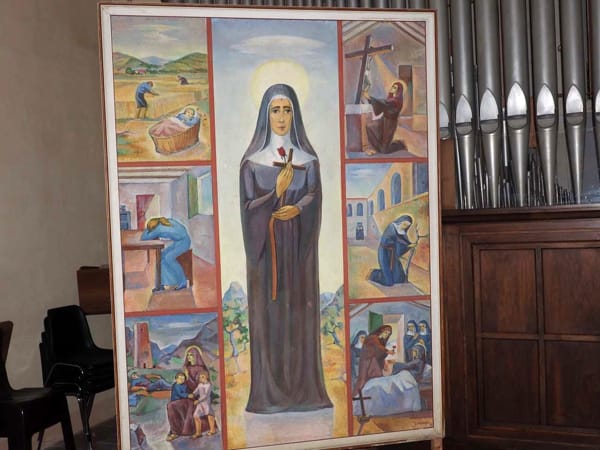
Slide title
Scrivi qui la tua didascaliaButton
Church of Santa Rita da Cascia
La chiesa parrocchiale di Santa Rita da Cascia è il principale luogo di culto cattolico di Cava dei Selci, frazione del comune di Marino, cittadina dei Castelli Romani, in città metropolitana di Roma Capitale e sede suburbicaria di Albano.
The project, dated to 1976, [2] is the work of the architect Sandro Benedetti.
The town of Cava dei Selci was born after World War II [3] around a disused flint quarry, among other things an important extraction site for the construction material of the Tiber river banks. The area, previously scarcely populated, [3] had found itself in a favorable position in the connections with Rome thanks to the intersection between the Tranvie dei Castelli Romani (Rome-Albano section, opened in 1906 and decommissioned in 1965), the Rome-Velletri railway (Casabianca station, later also Santa Maria delle Mole station) and the state road 7 Via Appia. Symmetrically, on the other side of the Appian Way, the town of Santa Maria delle Mole was born, whose nucleus was an agricultural cooperative (which gave birth to the toponym).
The church had to be inserted in a space identified in an area intensely urbanized out of nowhere in the 1960s and 1970s, however, conditioned in height by the presence of the flight cone of the nearby "Giovan Battista Pastine" airport of Rome-Ciampino. [1]
The architect Sandro Benedetti plans to create a liturgical hall consistent with the dictates of the Second Vatican Council, capable of bringing together the space for the faithful and the space for the clergy. [1] The plan is obtained by superimposing two Greek crosses, one rotated with respect to the other by 45 °. [1] The same plan, reduced, is proposed for the roof of the central lantern, the focal point of the church. [1]
All'esterno la chiesa appare come un massiccio insieme di torri ispirate alle cattedrali medioevali,[1] nettamente diverse dalle circostanti case degli uomini (più basse).[1] La chiesa sembra così "dare forma, materia e consistenza ai simboli della chiesa fortezza, Montagna Sacra e luogo della luce del Cristo" (Benedetti).
Benedetti riproporrà un modello analogo a quello di Cava dei Selci, seppur con maggior libertà di spazi, nella chiesa dei Santi Gioacchino e Anna (progetto 1979, realizzazione 1982-1984) a Torre Maura, zona urbanistica del comune di Roma, struttura che ottenne una menzione d'onore all'InArch regionale del Lazio del 1990.


